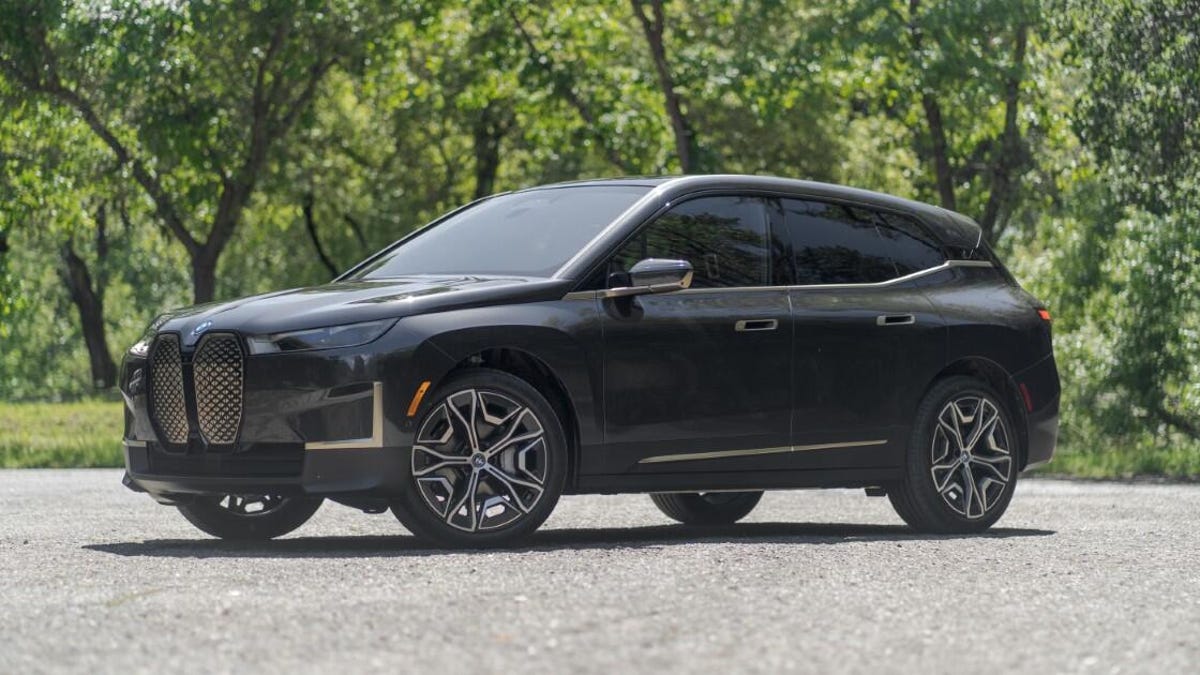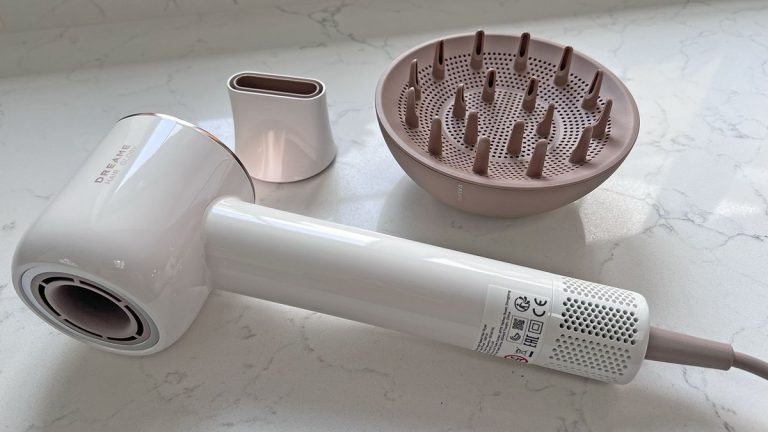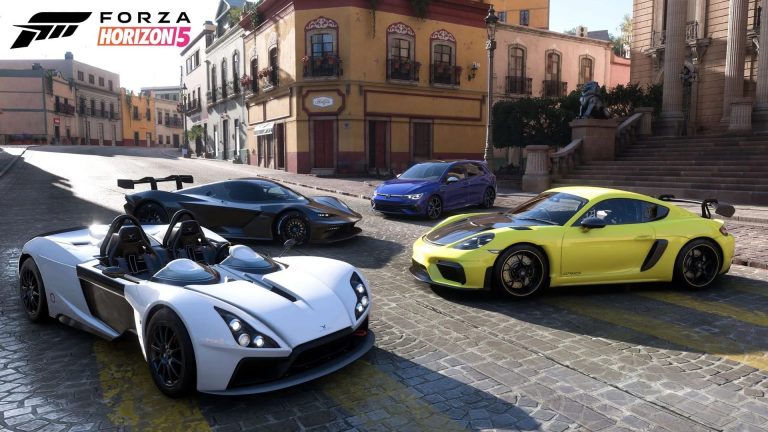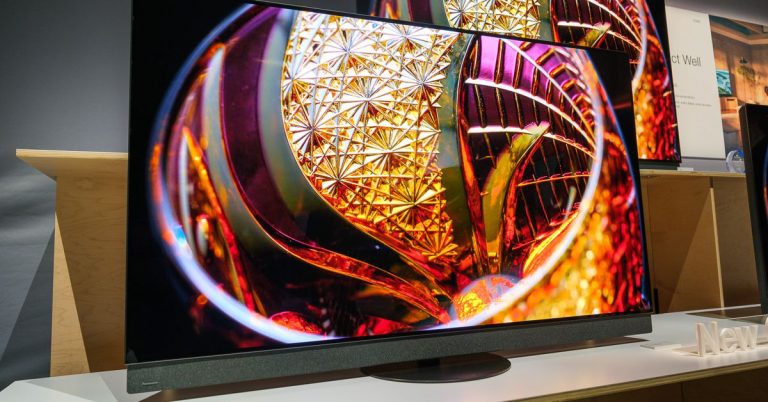2023 BMW iX xDrive50 Review: Pleasing Performer, Vexing Design

I had a blast tooling around in BMW’s new iX, but I’m not sure I’d want to settle down with it just yet.
The 2023 iX xDrive50 is one of two new electric vehicles BMW launched this year, alongside the i4 sedan. Of the pair, the iX xDrive50 is the bolder play: a completely new vehicle from the ground up, rather than a battery-powered version of an existing model. It also takes much larger risks. Many of those risks pay off in the form of excellent driving dynamics, comfort and range, but some of them don’t. The electric SUV is plagued by some strange and interesting design decisions, and I’m not just talking about its polarizing exterior.
Like
Powerful and responsive electric motors
IRL range easily meets EPA estimates
Gorgeous interior design
Don’t like
It’s kind of weird looking
Steep tech learning curve
One of the priciest in this class
xDrive50 electric powertrain
The iX comes standard with all-wheel drive, pairing a 190-kilowatt electric motor on the front axle with a more powerful 230-kW rear unit. Combined output peaks at 516 horsepower and 564 pound-feet of torque, enough oomph to silently launch the iX from 0 to 60 mph in 4.4 seconds. The surge of g forces under hard acceleration is impressive, but the benefits of instant, precise electric torque can also be felt when merging on the highway or just casually pulling away from a traffic light. It’s a well-rounded, confidence-inspiring powertrain.
The xDrive50 feels more than potent enough for driving on public roads, but if you need more power (or just have money burning a hole in your pocket),
BMW
added the 610-hp iX M60 to the lineup for the 2023 model year. That’ll pull off the 0-to-60 sprint in just 3.6 seconds — not quick enough to wipe the smirk off of a Tesla Model X Plaid, but it’ll run neck-and-neck with a Model Y Performance or a Mustang Mach-E GT.
The driver has two tools to customize the iX’s performance to their liking: My Modes and regenerative braking. The three My Modes — Personal, Sport and Efficient — primarily control accelerator responsiveness (and by extension, how much energy is used), but they also affect the steering and other vehicle systems. For example, when equipped with the optional Dynamic Handling package, Sport mode can lower the suspension by 0.4 inches for, well, more dynamic handling.
The selected My Mode also affects the optional Iconic Sounds generated by the iX’s speakers. Designed by German film score composer Hans Zimmer, this artificial powertrain noise fills the cabin as the EV accelerates, making use of Shepard tones — an illusion of overlapping sound that seems to infinitely rise in pitch — to create a sci-fi feeling of increasing speed. Sport mode sounds a bit deeper and louder than the other two settings. Alternatively, Iconic Sounds can be disabled altogether for those who prefer silent cruising.
There are four regenerative braking levels with the default being what BMW calls Adaptive Recuperation. This mode uses navigation data, battery level and the distance to the car ahead to determine how much regeneration to apply when lifting off the accelerator. This should net you the most efficient energy recapture but, in practice, it just makes deceleration feel inconsistent, difficult to predict and, at times, jerky. I prefer to choose one of the more consistent static regen modes: low, medium or high. Also, tapping the transmission from D to B mode with high regen enables one-pedal driving, where the iX can slow to a stop without touching the brake pedal — my favorite EV braking method overall.
Sport is the only customizable My Mode — neither Efficient nor, ironically, Personal can be personalized.
Range and charging
The iX is powered by a 111.5-kilowatt-hour battery, of which a net 105.2 kWh is usable. Interestingly, the EPA breaks out separate range estimates based on the size of the wheels equipped. The smallest 20-inch wheels earn the best 324-mile rating. Range drops to 305 miles with the 21-inch wheels, but oddly climbs again to 315 miles for the larger 22s. My best guess as to why is the 275/40R22 tire’s stiffer sidewall reduces rolling resistance just enough to make up for the additional rim mass.
Starting with an 80% charge, I cruised for 209 miles before stopping to recharging with 17% remaining. That’s about 10 miles better than I should have based on the EPA’s numbers — still within the margin of error, but even more impressive given my testing including a good chunk of Sport mode driving up twisty mountain roads. Not too bad.
This is about as open as the iX’s hood gets unless you’re a BMW service technician.
When it comes time to recharge, the iX pulls up to 195 kW at an appropriately powerful DC fast-charging station. That’s not as fast as a 250-kW Hyundai Ioniq 5 or the 270-kW Porsche Taycan, but it’s quick enough to add 90 miles of range with just a 10-minute session, or to go from a 10% to 80% state of charge in 40 minutes. BMW partnered with EVgo, providing buyers and lessees $100 of charging credit at its stations.
The most cost effective place to charge is at home during off-peak evening hours. On a Level 2 plug, the iX can pull 11 kW, meaning it will charge from flat to full in around 11 hours.
Ride and handling
Extensive use of lightweight materials — like the aluminum and carbon-fiber composite chassis (which are visible when you open the doors or rear hatch) and aluminum suspension components — help keep weight down. Still, the iX is a very heavy machine, tipping the scales at 5,769 pounds as optioned here. Fortunately, much of the weight is beneath the floor in the battery pack. This low center of mass helps the iX stay nice and flat around corners, which means BMW’s engineers could tune the double-wishbone front and five-link rear suspension to be a bit softer for comfort. The SUV soaks up bumps well even on the optional 22s, and this is likely thanks to BMW’s lift-related dampers — hydraulic shock absorbers that progressively vary their damping force as the wheels travel up and down.
This example is equipped with the optional Dynamic Handling package, which adds an auto-leveling air suspension good for preventing sag when towing a braked trailer up to 5,500 pounds — though who knows what havoc that will wreak on your range. As mentioned before, the air suspension automatically lowers to improve stability at high speeds and in sport mode and can be manually raised for 0.8 inches of additional ground clearance at very low speeds. Additionally, this package adds rear-wheel steering that both helps with low-speed agility and highway stability.
The seats could use more lateral support, but the heated and ventilated buckets are quite comfortable for long hauls and commutes.
Polarizing design
I’m willing to concede that the eye of another beholder may find beauty somewhere in the iX’s tall wagon proportions, but I don’t find the design very cohesive. For example, the severe L-shaped trim on the front bumper doesn’t seem to line up with any other element of the fascia and feels tacked on in a way that annoys me even more than BMW’s new corporate grille. Most days, I simply don’t enjoy looking at the iX, but sometimes I catch an odd angle and it’s not so bad. (Some of my colleagues have more positive opinions about BMW’s styling.)
I do like that the buck-toothed grille hides a very cool technology: It’s made of a self-healing polymer. Pick up a rock chip or a scratch on its glossy finish and the surface will gradually work its way back to shiny and flush again. Heat accelerates the process, so on a hot summer day (or with some coaxing from a hair dryer), you can watch it heal before your eyes. The BMW roundel just above the grille pops open to reveal a hidden washer fluid reservoir, which would be neat if it weren’t necessary because the iX’s hood requires a service technician to open — a double bummer because it means there’s no frunk. Still, this a more elegant solution than
Mercedes-Benz’s
weird washer fluid fender slot on the EQS and EQE.
The iX’s cabin, on the contrary, is absolutely gorgeous. It makes great use of materials that look fantastic and are tactilely interesting to touch, from the crystal cut glass iDrive control knob and seat adjustment controls to the unique wood veneer capacitive buttons on the center console — all optional. The bucket seats are quite comfy with an upright position that offers great visibility in all directions around the airy greenhouse. Also optional is this model’s electrochromic glass roof that boosts the feeling of spaciousness and goes opaque at the touch of a button to keep the sun off of your head.
The iX’s cabin looks so good I’m willing to forgive the awkward exterior.
But all is not well in this aesthetic paradise and a few ergonomic nitpicks stand out. There’s the electronic door release, which is positioned too far forward and high on the door to get good opening leverage. I had to elbow and shoulder the door open awkwardly to get out, while my smaller copilot needed to shove with both hands to muscle it open.
BMW also simplified the iX’s steering wheel controls significantly, using glossy capacitive touch pads surrounding a thumb wheel instead of discrete physical buttons for the cruise control, infotainment and whatnot. Additionally, there doesn’t appear to be a toggle to disable cruise control; the system is always armed and ready for one tap to set or resume your cruising speed. So far so good, but twice when chucking the iX around a corner, my palm contacted the pad while turning the steering wheel 90 degrees, causing the cruise control to unexpectedly resume mid-turn, lurching forward while I scrambled for the brakes. I was able to catch it both times, but it left a sketchy mark on an otherwise exemplary driving experience.
Aside from this ergonomic gripe, the rest of the iX’s optional and standard driver aid features work pretty well. Optional adaptive cruise works in stop-and-go traffic and integrates nicely with the lane-keeping steering assist and the hands-off Traffic Jam Steering Assist that works at speeds below 40 mph. Parking Assistant Professional is also available and can automatically guide the SUV into parallel and perpendicular parking spaces at the touch of a button. There’s standard forward-collision avoidance that can be upgraded to add optional side collision avoidance, too.
Keep scrolling; there are dozens more nigh-identical looking icons on just this menu screen.
iDrive 8
The iDrive 8 multimedia software is a step forward from the previous generation, but also two steps backward. The system is still built around a pair of huge displays that now seem to float above the dashboard on struts. The left screen is the 12.3-inch digital instrument cluster while the right is a larger, 14.9-inch main touchscreen. iDrive 8 is a responsive system and, like the rest of the iX’s cabin, the high-resolution screens look fantastic and are customizable with themes featuring nature-inspired imagery.
Unfortunately, the menu is a mess of tiny icons. I counted nearly 30 of them on the main screen in no particular order and with extremely flat organization. Rather than, for example, combining FM and Sirius XM radio into one audio sources menu, they both have separate buttons on the home screen that must be found amongst dozens of others at highway speeds. My colleagues reminded me that I could organize the menu myself by dragging the icons around and eight shortcuts can be saved to a favorites menu for quick access, so most users will be able to customize their way around the problem with a bit of tinkering, but it’s a steep learning curve and I think the curated organization of iDrive 7 was a better out-of-the-box experience.
Back in the pros column, there’s standard Apple CarPlay and Android Auto compatibility with wireless connectivity for both. The iX even supports the latest quick pairing tech for either, so you don’t even need to fiddle with the menus to get paired up and running. There are also six USB type-C charging ports scattered around the cabin (two in the front and four for second-row passengers) and neat little slots perfectly sized to hold mobile phones on the center console and in the doors.
One of the iX’s coolest features is its self-healing grille. What? I didn’t say it was the best looking feature.
Price, competition and final thoughts
The 2023 BMW iX xDrive50 starts at $85,095 including the required $995 destination charge. This example rolled into my driveway wearing a $101,075 sticker thanks mostly to $3,500 worth of premium leather upholstery on $1,600 upgraded seats, plus $1,900 for the 22-inch wheels. I’ve also got the $7,700 Ultimate package that rolls nearly every bell and whistle left to get — including the Dynamic Handling upgrades, Iconic Sounds, the glass and wood interior trim, the iX’s complete driver aid suite and more — into one line item.
At that price range, the BMW iX skews more premium than most of its electric SUV competitors. The BMW is significantly more expensive than an Audi E-Tron SUV and Sportback, but it’s also more powerful with nearly 100 miles of additional range. The iX also slots somewhere between Tesla Models X and Y.
Judged solely on the driving experience, range and handling, the all-new iX is a spectacular new entry in BMW’s electric car portfolio. However, BMW then went and made so many weird little design decisions — from the steering wheel controls to the weird door openers, the complicated menus and, yes, my aesthetic hang ups — that it doesn’t quite stick the landing as one of my favorites in this class.
Your mileage may vary.






